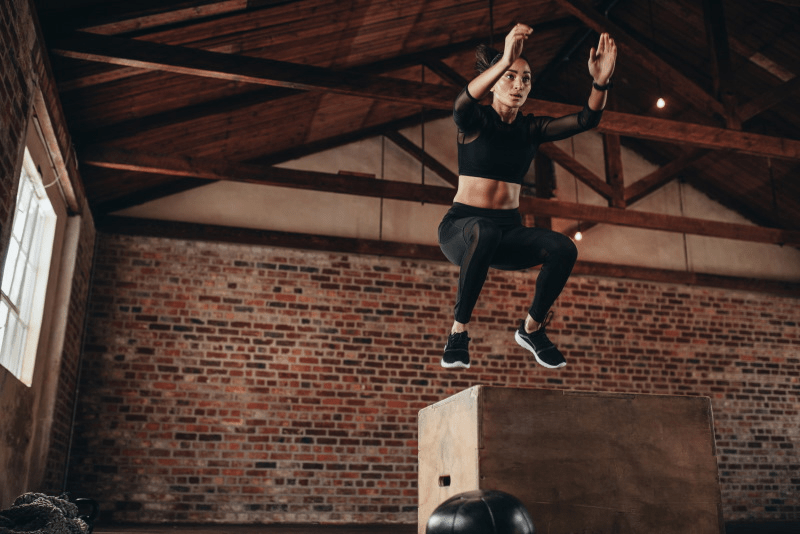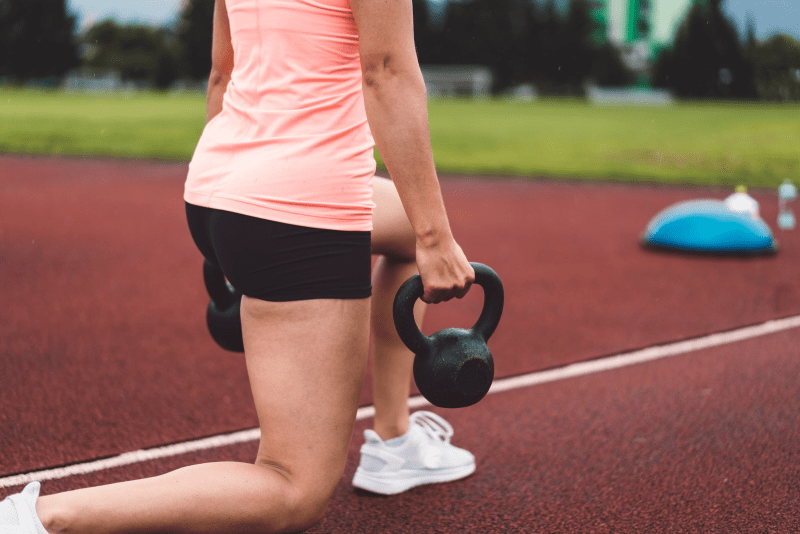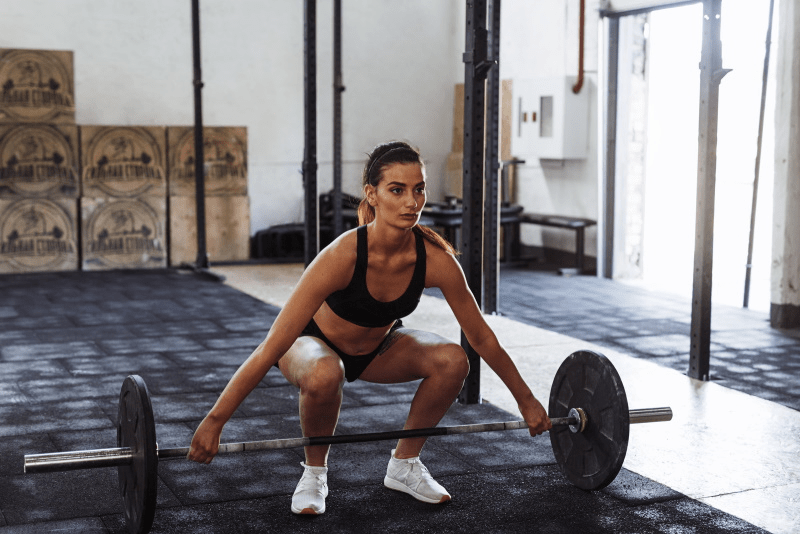

Looking for a way to shave a few minutes off your PB? Adding specific strength training exercises to your weekly workout schedule could be that silver bullet you need to help you run faster and stronger.
Not only will strength training help you run faster by improving neuromuscular coordination and power, it can also improve running economy by facilitating coordination and stride efficiency. An added benefit is that regular strength training can also prevent injuries by strengthening muscles and connective tissues.
How to use this guide
Ultimately, as a runner your priority is running. Therefore, these exercises should not take up too much of your training schedule. The objective here, is to supplement your running by performing strength exercises on non-running days. To start, aim for 2 or maximum 3 strength training sessions a week, and always allow time for full recovery. In this way, these exercises will build strength and power without compromising your running fitness.
1. The Box Jump

How will it help: The box jump will help build explosive power in your legs by working all the main muscles: your glutes, hamstrings, quads and calves. To harness this explosive power effectively, use a higher box and focus on completing quality reps instead of a high number of repetitions. If done correctly, box jumps will train your muscles to "turn on" faster for increased speed when running.
“Runners should concentrate on building power—how fast you can use the force you’ve built up,” explains Jay Dicharry, director of the Speed Clinic at the University of Virginia. “Explosive movements help you activate your muscle power quickly during push-off.”
How to perform a box jump: Find a box around 50cm - or lower, until you perfect your form. Then stand with your legs shoulder-width apart, swing your arms backwards as you bend your legs into a quarter squat position. Swing your arms forward as you jump up onto the box - again landing softly in a quarter squat position. If you land in a deep squat, it may be a sign that your box is too high. Remember to focus on jumping higher, with as much explosive power as you can while keeping proper form.
How many reps: Aim for 5 sets of 5 reps.
2. Walking Lunges

How will it help: Not only can walking lunges dramatically strengthen your legs and core muscles - they can also help strengthen your hips to improve balance and stability when running.
How to perform walking lunges: Stand with your legs hip distance apart. Lunge forward with your right leg until both legs are bent in a 90 degree angle - be sure to keep your right knee in line with your ankle and not protruding over your toe. Then push off with your left foot, lunging forward until your left foot is in front and your knees are bent in the same 90 degree position. Push off with your right foot and continue walking forward until you've completed the desired number of repetitions.
How many reps: Aim for 4 sets of 12 reps each leg.
3. Deadlifts

How will it help: Deadlifts can help you push off faster and stronger as you increase your pace by developing propulsive force in your hip extensors and glutes. This exercise also works muscles in the legs, core and back - making it one of very few exercises to target both upper and lower body muscle groups.
How to perform a Deadlift: With the barbell in front of you, stand with your legs hip distance apart. Bend down, bending your knees and keeping your back straight, chin up, and push your hips backwards as you grip the barbell. The bar should be lightly touching your shins as you pick up the barbell - try and keep the bar as close to your legs as possible throughout the movement. Keep your knees bent as you pick up the barbell, still keeping your back straight. Drive your hips forward, lifting the bar with your legs. Pull your shoulders back as you stand up straight, then carefully lower the bar to the ground again. Be sure to always keep your back straight and your chin up to avoid injury to your lower back.
How many reps: Aim for 4 sets of 8 reps
4. Toe Taps

How will it help: The aim of this exercise is to boost muscular power and ultimately enable you to run faster for longer. You'll want to stay light on your feet, pushing off as quickly as possible with as little ground contact time as possible to get your muscles responding quicker.
“They also increase your ability to run with good form and improve running economy,” says running coach Nick Anderson. “This means your legs become quicker at landing and pushing off the ground, making you faster and more efficient.”
How to perform Toe Taps: Stand in front of a bench or step, then bring your right foot up to lightly touch the top of the platform. Quickly alternate your legs by bringing your left foot up to touch, and then keep repeating this motion as fast as possible. Use your arms to power the movement and increase the speed of your legs.
How many reps: Aim for 4 sets of 30 seconds to 1 minute
5. Hip Flexor Stretch

How will it help: Increasing the range of motion in your hip flexors is absolutely essential for building speed. Runners often suffer from tight hip flexors - which is worsened by the traditional work week of frequent sitting. This is why it is crucial to stretch these muscles on a regular basis by performing a basic hip flexor stretch.
How to perform a Hip Flexor stretch: Start by stepping forward with your right foot into a lunge and lower your left knee to the floor. Your legs should be bent at a 90 degree angle. Keeping your back straight, drive your hips forward until you feel a stretch in your hip flexors, as well as your quads and hamstrings. Hold the stretch for 30 seconds to a minute, then return to the starting position with your legs in a 90 degree angle. Repeat with the other leg.
How many reps: Aim for 3 reps on each side
Final Thoughts
In order to fully maximise your stride length, power and ultimately your speed - try adding the above exercises to your weekly routine. Always aim for perfect form over everything when performing these exercises, to ensure optimal results and prevent injuries that could compromise your training. By strengthening your muscles and encouraging them to facilitate a greater power output - you have the potential to really supercharge your running performance.

